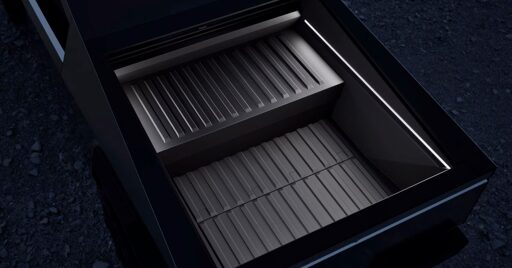- cross-posted to:
- [email protected]
- cross-posted to:
- [email protected]
Tesla has confirmed it has given up on plans to make a Cybertruck range extender to achieve the range it originally promised on the electric pickup truck.
It started refunding deposits for the $16,000 extra battery pack.
When Tesla unveiled the production version of the Cybertruck in late 2023, two main disappointments were the price and the range.
The tri-motor version, the most popular in reservation tallies before production, was supposed to have over 500 miles of range and start at $70,000.
Tesla now sells the tri-motor Cybertruck for $100,000 and only has a range of 320 miles.
The dual-motor Cybertruck was supposed to cost $50,000 and have over 300 miles of range. In reality, it starts at $80,000 and has 325 miles of range.
Archive link: https://archive.is/CGbaE



Two in the back, one in the front. There’s also a two and four motor version.
The Shocker
That’s the other way around.
That makes even less sense. Distributing mechanical power on non steering wheels is easy, but for steering wheels requires a more complex and expensive coupling, as well as power losses. Just… why?
I believe the three motor versions is to add extra power under load to the rear wheels. (A weight/power/range compromise between the 4 and 2 motor versions).
The motors are essentially in line with the wheels (they have gearing but it’s minimal and internal to the motor housing, not attached like an automatic transmission would be, if that makes sense.)
The “three motor” design is just the single motor design up front and the dual motor design in the back.
I’m not sure if they ever actually released the single motor version though.
Lol like there’s enough room back there to add a load.
It’s supposed to tow. In theory.
LOL
I’ve seen arcade games built tougher than the interior of that POS lol
The load of getting this brick up to speed quickly so the driver can show off
Basically they use the same size motor everywhere, and your total torque and power is dependent on how many you’ve got?
pretty much. I believe all the cars use the same motor except for the plaid versions (or maybe just the S plaid?) that has a different motor that’s designed to hit higher rpm’s
More power to the rear makes sense because you get more traction at the rear under normal acceleration, not just when carrying a load. It’s pretty typical of electric cars to do this, just like it’s typical to have bigger brakes on the front of all cars, because there’s more traction at the front under braking.
There’s also the issue of torque vectoring. Without a differential, torque vectoring is essential, but under acceleration torque vectoring to the rear wheels is much more effective than to the front wheels, so that’s another reason to split the rear power but not the front.
How do you figure dual front motors would alleviate any of what you said a front diff would need? Dual front motors will still be rigidly mounted to the chassis, requiring flexible couplings. The rear is also independent, requiring the same flexible couplings whether it’s a diff or motors. CV axles all around. Non-steer wheels still have vertical travel from the suspension.
You wouldn’t need a front differential, for one. But you’re right, unless they somehow made a directly wheel coupled motor that turned with the wheel, it l still needs CV couplings.
As for rear, they don’t need CV axles. Two simple cross couplings are enough. The speed variability happens significantly when the wheels turn, going up and down is a negligible issue. Cars have been using the much chapter and simple cross couplings in the rear for decades.
The CT has four-wheel steering, so yeah, it’s actually more complicated than a regular truck in that regard. I remember reading something about the mechanisms to make that possible taking up a shitload of room.
Oh yeah, forgot about that. They had to bolt that on to have any chance of having a reasonable turn radius.
Look under any RWD IRS passenger vehicle and you’ll find nearly every single example uses CV axles, not u-joints. U-joints have famously irregular speed variation as the angles change in steady rotation, so the constant velocity joint is far more common for the half axles
Why? More power……